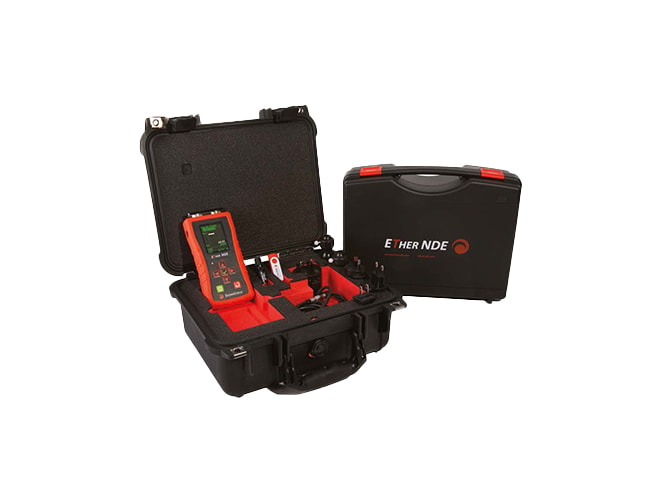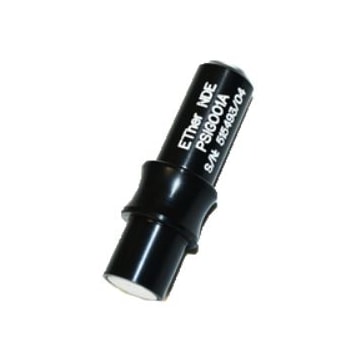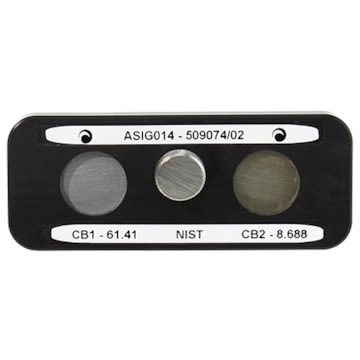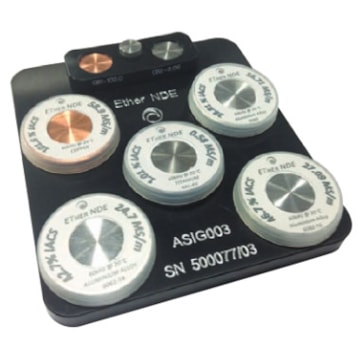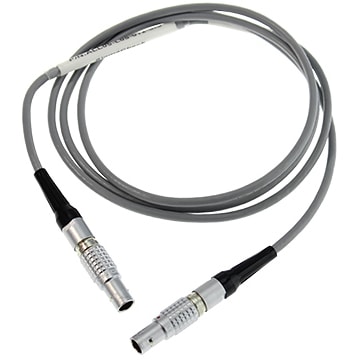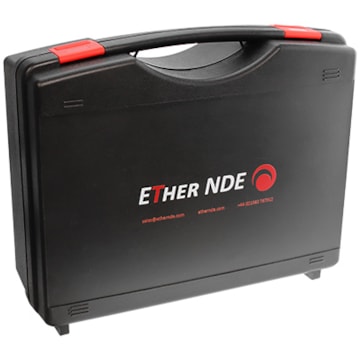
ETher NDE SigmaCheck-2 Eddy Current Tester
ECT conductivity meter for checking non-ferrous metals for identity, grade, and material conditions.
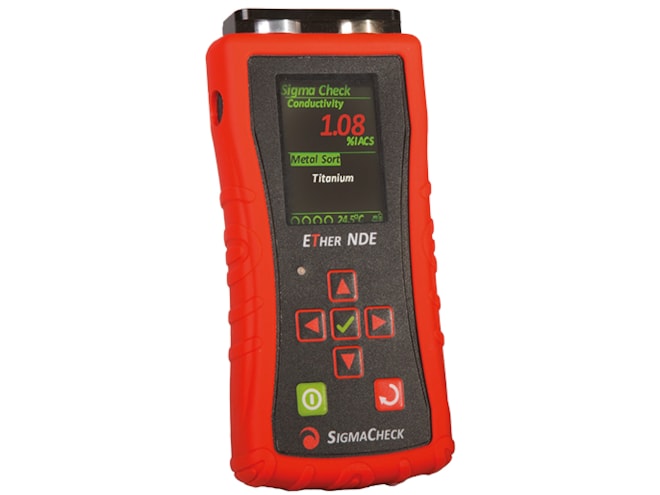
Overview
Features
- 0.5 to 110% IACS (0.28 to 64MS/m) conductivity
- ±0.05 IACS accuracy for 0 to 20% IACS @ 68°F (20°C)
- ±0.25% of readout accuracy above 20% IACS
- Dual conductivity setting reference:
- 9.4% and 58.8% IACS
- 60, 120, 240 & 480kHz operating frequencies, with 960 KHz option
- 32 to 122°F (0 to 50°C) temperature measurement, accurate to 0.5°C
- 2GB of storage for over a million data points
- User programmable color LCD display
- 2-year warranty on instrument (excludes batteries)
What's in the Box
- Probe and cable
- Rubber boot and case stand
- Dual conductivity reference standards, nominal values 9.4% and 58.8% IACS
- Built-in lithium ion battery
- Charger with UK, US, EU adapter, 100 to 240V
- USB to Micro USB cable
- Manual and software on USB stick
- Quick reference card and calibration certification
- Polypropylene hard carry case
Description
The ETher NDE SigmaCheck-2 Eddy Current Tester, KISIG001B, is an upgrade of the original SigmaCheck-2, KISIG001A. The new model includes an updated probe map design, upgraded PCB Board, increased battery life with new built-in lithium ion battery, and an improved setup calibration block design. It is designed to provide fast and accurate conductivity measurements with automatic temperature compensation and resistance to "edge effect". The high resolution LCD display provides up to three decimal places' precision, and an adjustable LED backlight.
The tester includes an ergonomic design with high impact, splash-proof, molded UL94-5VA flame-retardant ABS case, adaptable to rough environments. The battery lasts for over 12 hours, the firmware is field-upgradeable, and probes may be exchanged in the field via SD card.
Data may be stored and uploaded to a PC for record keeping and report generating. The real-time clock grants the user the ability to time and date stamp readings, making it easier to sort and organize measurements in Microsoft Excel.
Applications
- Material verification & sorting
- Heat treatment verification
- Heat, fire, or lightning damage investigation
- Material aging assessment (including alloys)
- Measuring phosphor content of Cu alloys
- Monitoring of deposition process for non-ferrous material on a non-ferrous substrate
- Monitoring the condition of highly stressed parts
- Forged & plated material verification
- Non-conductive coating thickness measurement
- Determining the purity / composition of materials (i.e. gold bullion and coins)
- Aircraft structures (e.g. paint thickness measurement)
Documents
Accessories
Accessories
Please consider these optional accessories.
Spare Parts
Need Help? Call a Flow engineer at 1-800-884-4967
We're open Mo-Th 8am to 5:30pm. Fr 8am to 5pm ET


